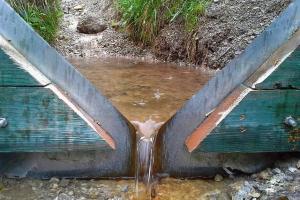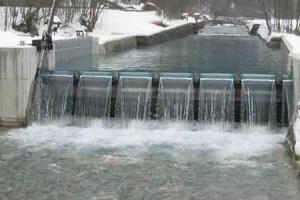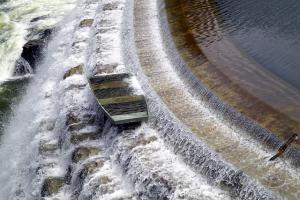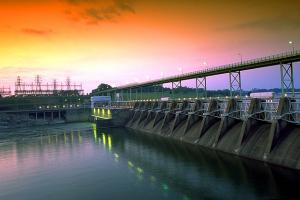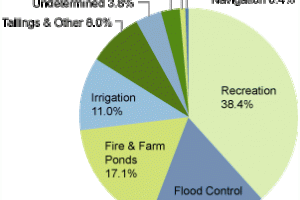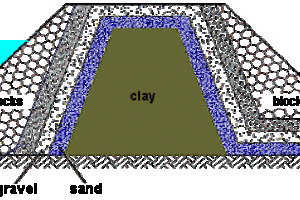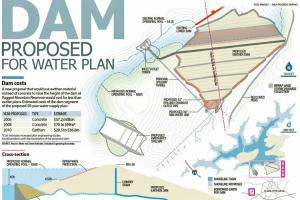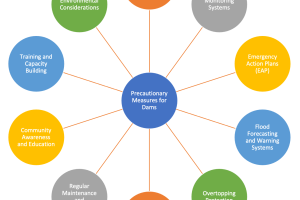Causes of Dam Failure
Dam Failure
Dam failure is defined by the International Commission on Large Dams (ICOLD) as the ‘collapse or movement of part of a dam or its foundation so that the dam cannot retain water.
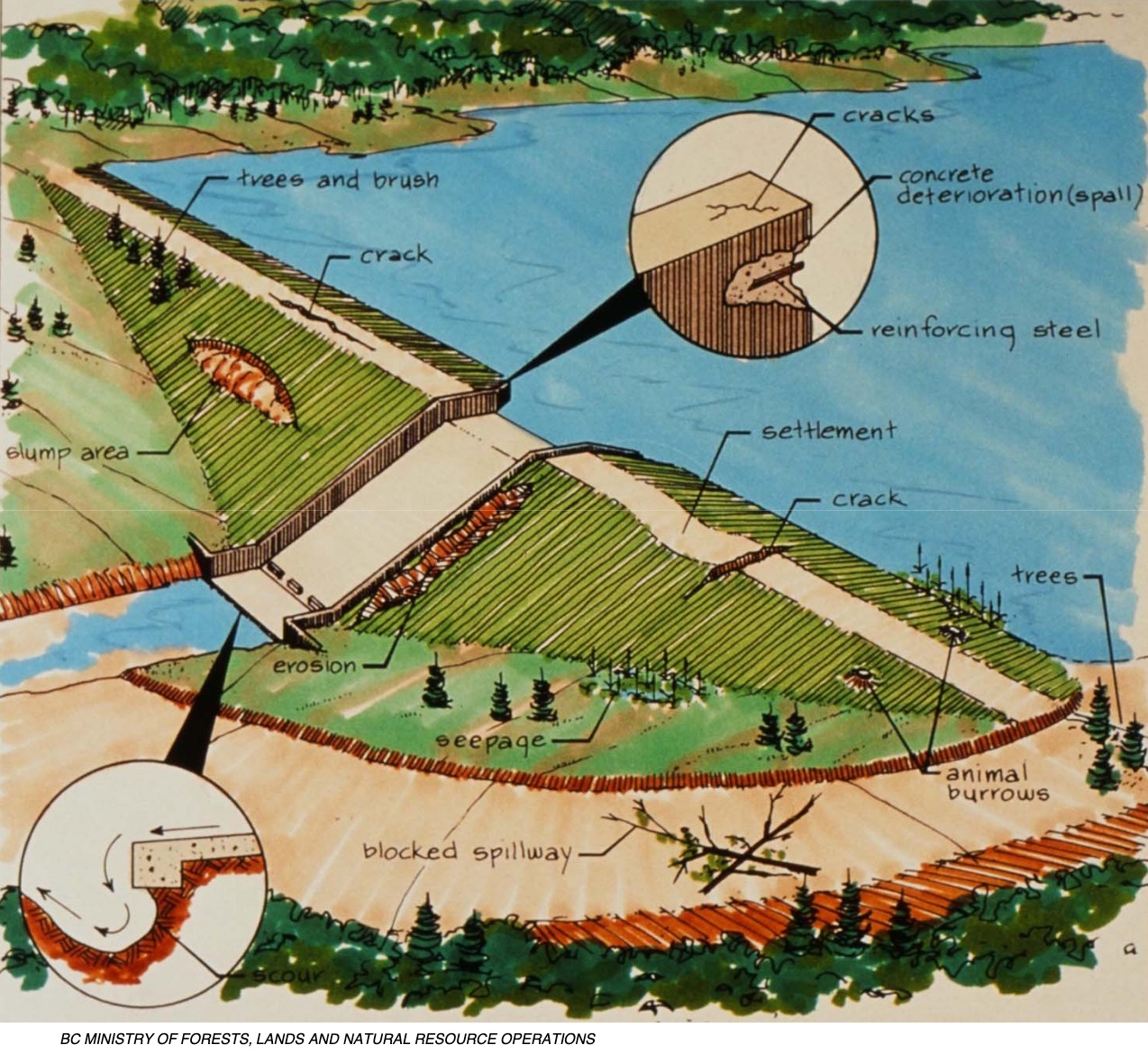
In general, a failure results in the release of large quantities of water, posing serious risks for the people or property downstream. The most common cause of failure of earth and rock-fill dams is overtopping (31% as the primary cause and 18% as the secondary cause). This is followed by internal erosion in the body of the dam (15% as the primary cause and 13% as a secondary cause) and in the foundation (12% as the primary cause and 5% as a secondary cause). With masonry dams, the most common cause is overtopping (43%) followed by internal erosion in the foundation (29%).
Where other works were the seat of the failure, the most common cause was inadequate spillway capacity (22% as the primary cause and 30% as the secondary cause). Foundation problems are the most common cause of failure in concrete dams, with internal erosion and insufficient shear strength of the foundation each accounting for 21% of failures.
- Overtopping
- Structural Deficiencies
- Foundation Defects
- Seepage and Piping
- Hydraulic uplift and Pore Pressure
- Slope Instability
- Extreme Hydrological Events:
- Human Error and Maintenance Negligence
Causes of Dam Failure
Dam failures can occur due to various factors, including natural causes, design or construction flaws, inadequate maintenance, and human error. Here are some common causes of dam failure:
1. Overtopping:
Overtopping is the most frequent cause of dam failure. It happens when the water level in the reservoir exceeds the capacity of the dam to safely discharge it. Overtopping can erode the dam structure, leading to a breach or collapse.
2. Structural Deficiencies:
Poor design, inadequate construction practices, or material weaknesses can lead to structural deficiencies in a dam. These deficiencies may include insufficient strength, improper foundation preparation, inadequate spillway design, or inadequate seepage control measures. Over time, these weaknesses can compromise the integrity of the dam and contribute to failure.
3. Foundation Defects:
A dam's foundation plays a critical role in its stability. If the foundation is not properly prepared, or if it consists of weak or compressible soils, it can lead to settlement, sliding, or seepage issues. These foundation problems can compromise the stability of the dam and increase the risk of failure.
4. Seepage and Piping:
Seepage is the movement of water through or under a dam. If seepage is not properly controlled, it can lead to piping, which is the erosion of soil particles and internal erosion within the dam structure. Piping can weaken the dam and create preferential flow paths, potentially leading to internal erosion and failure.
5. Hydraulic Uplift and Pore Pressure:
Hydraulic uplift occurs when water pressure beneath the dam exceeds the pressure on top of the dam. This can result in the uplift of the dam structure, reducing its stability and potentially leading to sliding or instability. Poor design or inadequate drainage measures can contribute to elevated pore pressures and hydraulic uplift.
6. Slope Instability:
Slope instability can occur due to factors such as weak soils, excessive loading, improper compaction, or seismic activity. If the slopes of a dam are not properly designed or maintained, they can experience slope failures or landslides, which can compromise the stability of the dam.
7. Extreme Hydrological Events:
Severe weather conditions, including heavy rainfall, prolonged precipitation, or rapid snowmelt, can increase water levels in reservoirs and generate significant inflows into dams. If the dam's capacity is exceeded, it can lead to overtopping, increased seepage, and potential failure.
8. Human Error and Maintenance Negligence:
Human error, including inadequate inspection, maintenance, or operational practices, can contribute to dam failure. Poor decision-making, failure to address known deficiencies, or neglecting proper maintenance and monitoring can increase the risk of failure.
It's important to note that dam failures are often the result of multiple contributing factors and rarely due to a single cause. Proper design, construction, regular inspections, and maintenance are crucial for ensuring the safety and integrity of dams. Monitoring systems, emergency response plans, and adherence to industry standards and regulations also play essential roles in minimizing the risk of dam failure.



